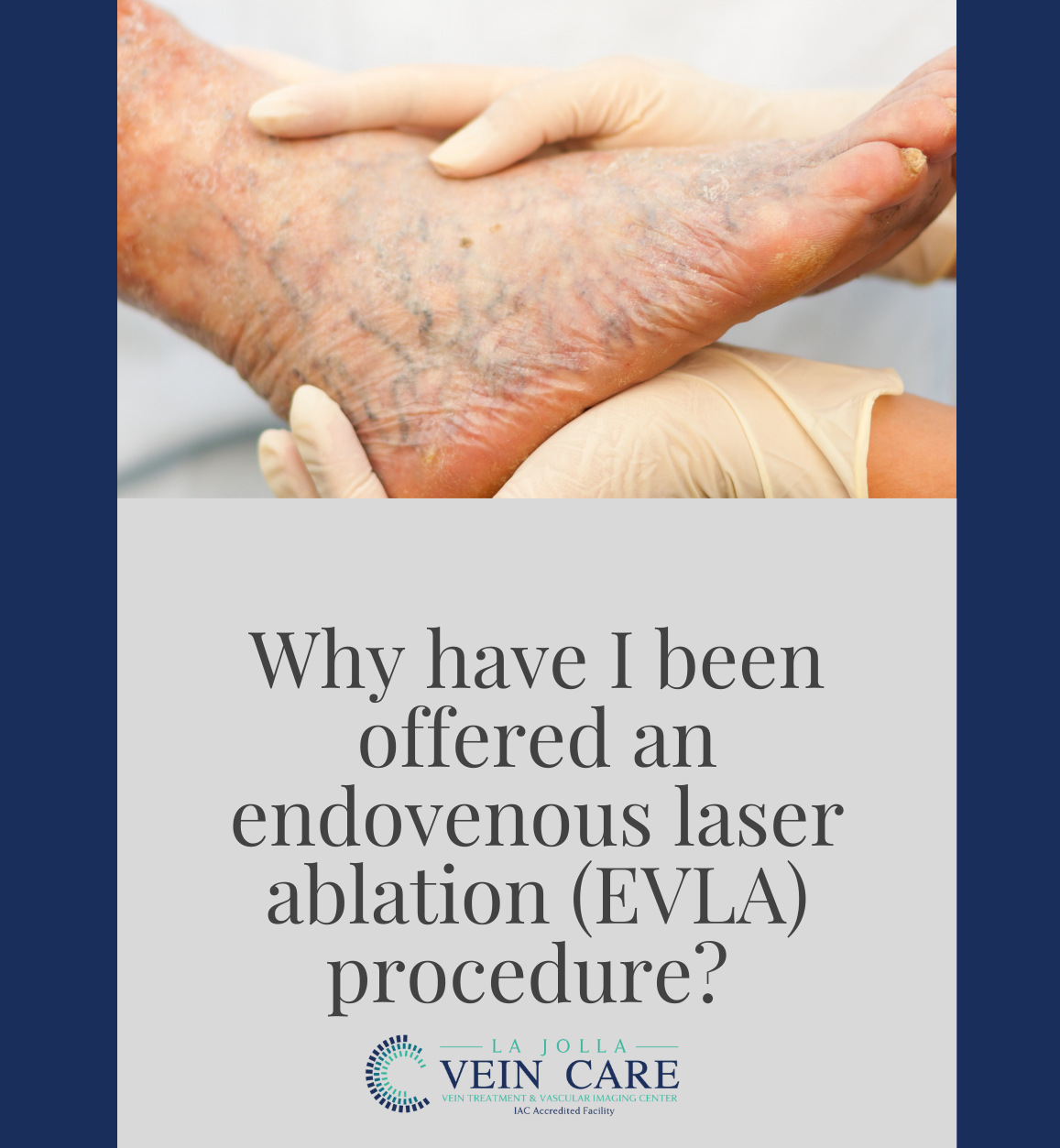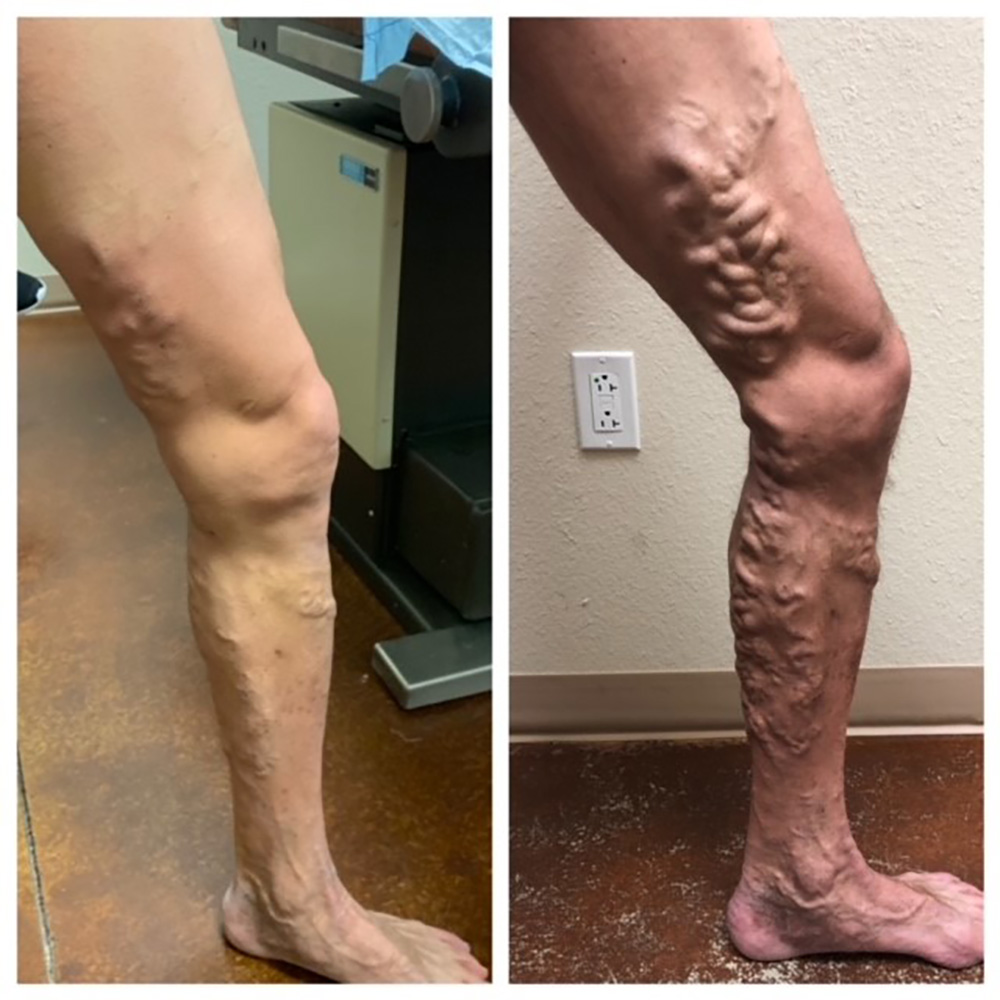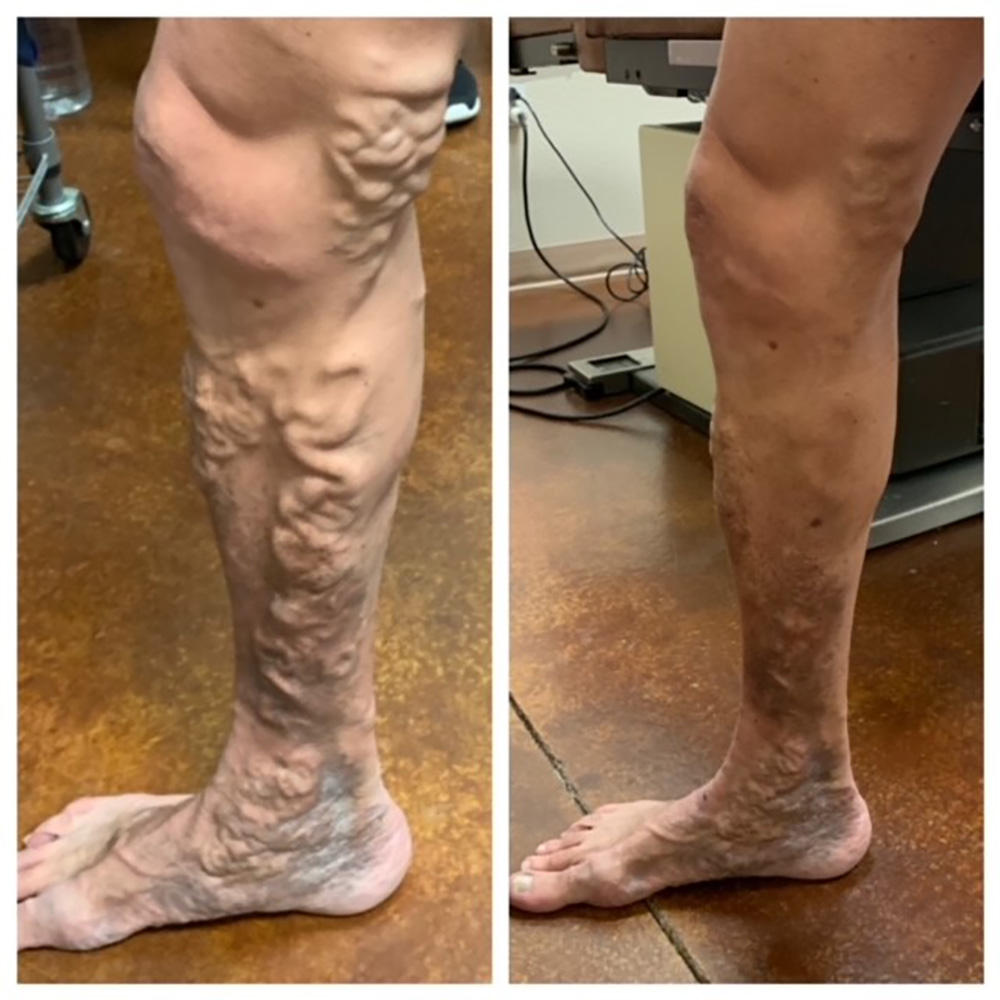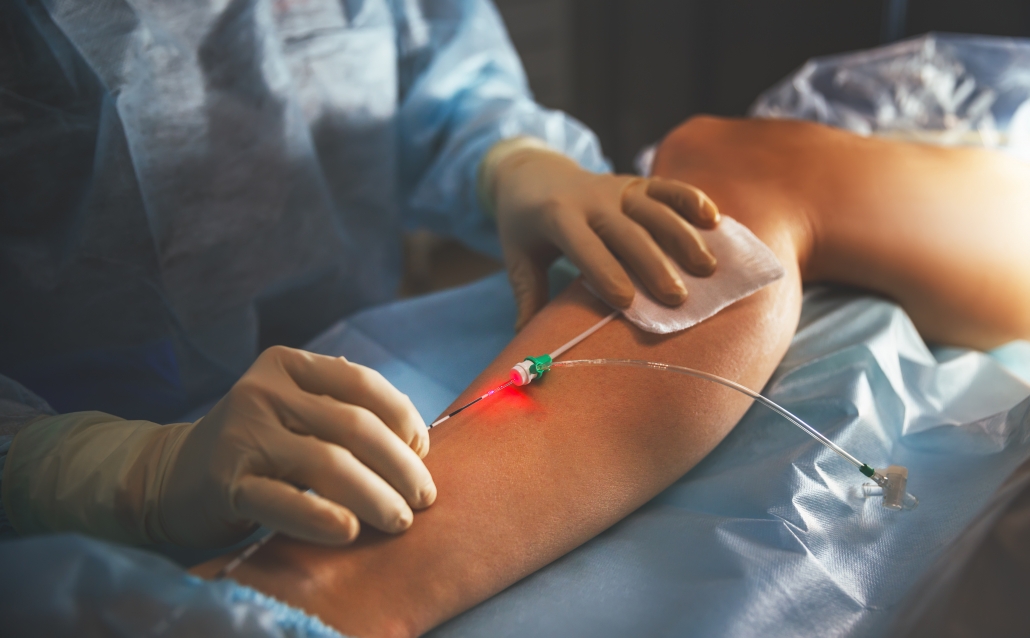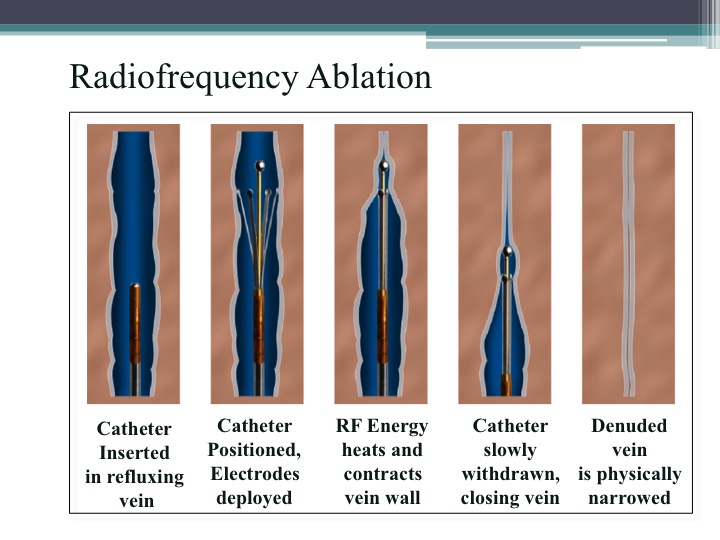Why have I been offered an endovenous laser ablation (EVLA) procedure?
LJVascular2022-03-17T10:20:32-07:00Endovenous Laser Ablation for Saphenous Vein Reflux
Endovenous laser vein ablation, also known as endovenous laser therapy (EVLA), is a type of treatment for saphenous vein reflux, the underlying cause of most varicose veins. At La Jolla Vein Care, we offer ALL treatment modalities for varicose veins, not just one. Treatment is customized based on a person’s individual pattern of venous reflux (determined by ultrasound examination), personal preference, and personal health history.
The endovenous laser vein ablation procedure may be offered for backward flow (or “reflux”) in your saphenous vein(s). The great and small saphenous veins are the two main superficial veins that run along the inner thigh/ calf and the back of the legs, respectively. Some people have anatomic variations where the small saphenous vein in the back of the calf extends to the thigh. Many people also have reflux in their anterior or posterior saphenous veins.
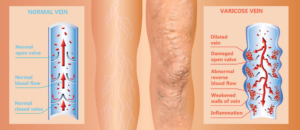
This minimally invasive procedure can be performed in the office in less than 30 minutes and patients return to their usual level of activity the same day.
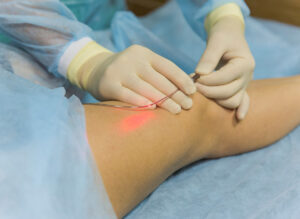
How does the treatment work?
The skin is numbed with lidocaine, then a tiny wire and the laser catheter are inserted into the vein. The catheter delivers laser energy to the vein wall, causing it to seal shut. The remaining healthy veins continue to bring blood back to the heart.
What should I expect on the day of treatment?
The procedure is performed with local anesthesia, but many patients elect to use a mild oral sedative (Valium), which is taken after checking in and completing all paperwork. You will change into a gown and leave underwear on.
Depending on the vein to be treated, you will lay on your back or on your belly. We do our best to make special accommodations (for example, if you cannot lie flat or cannot bend a knee very well) with body positioning and using pillows. We will do our best to make you comfortable. Then, we will give you the option of watching a movie on Netflix or listen to music. Once you are comfortable, your leg will be prepped with cleansing solution for the sterile procedure. The doctor will perform an ultrasound to map the vein to be treated.
Then, a numbing agent (lidocaine) will be injected into the skin. In the numb area of the skin, a tiny puncture is made to pass the laser catheter under ultrasound guidance. Your doctor will then use a needle to administer a combination of cool saline and local anesthetic around the vein. This solution numbs the vein and insulates it from the surrounding tissue. Laser energy will then be used to painlessly treat the vein. Once your vein has been treated, we will help you into your compression stocking, which you will wear for 72 hours continuously. You will walk for 30 minutes prior to getting in your car.

